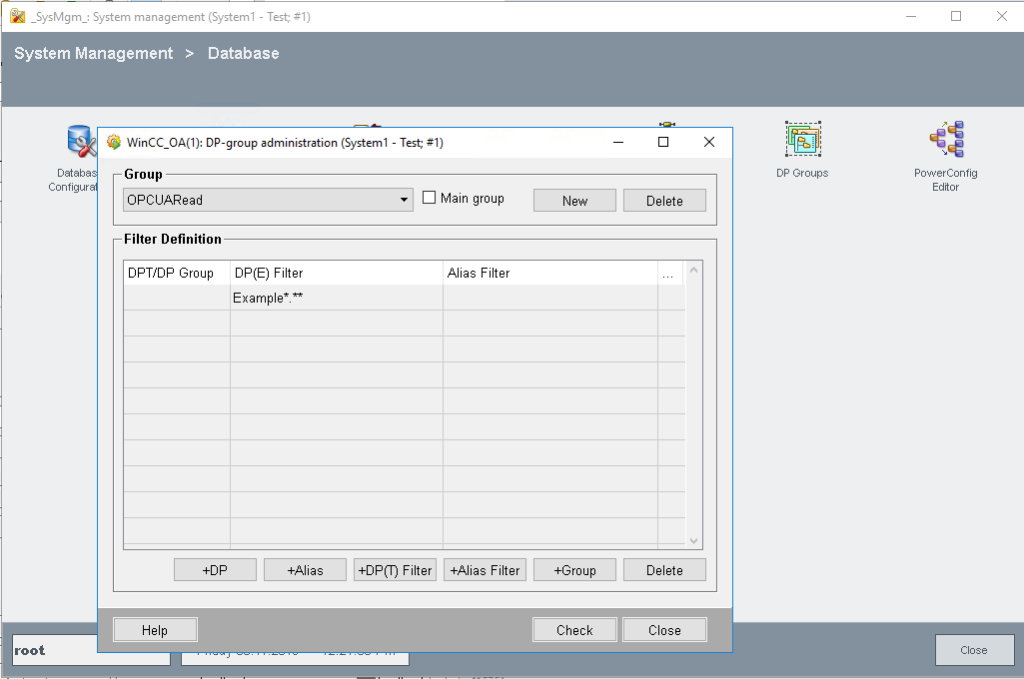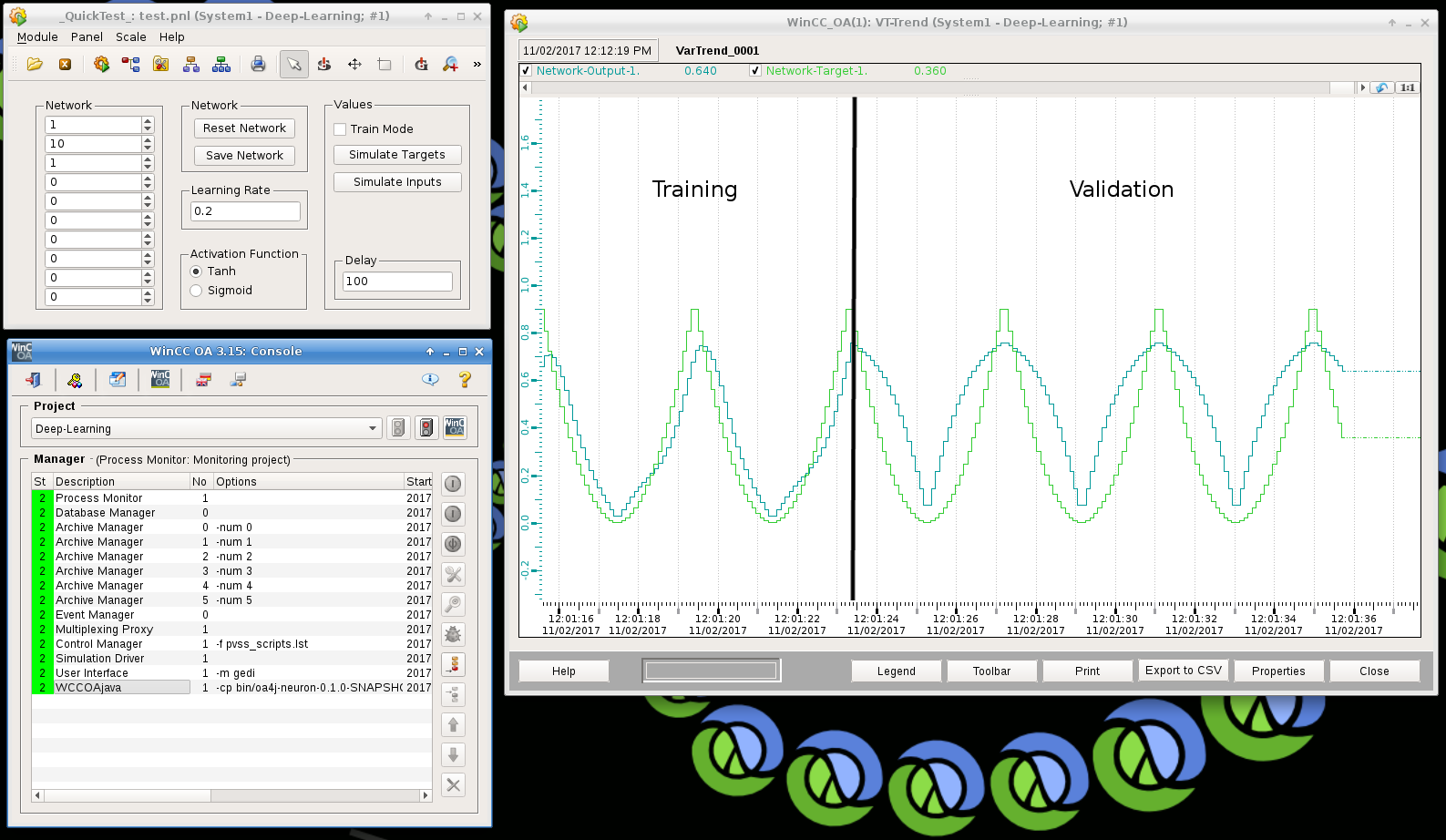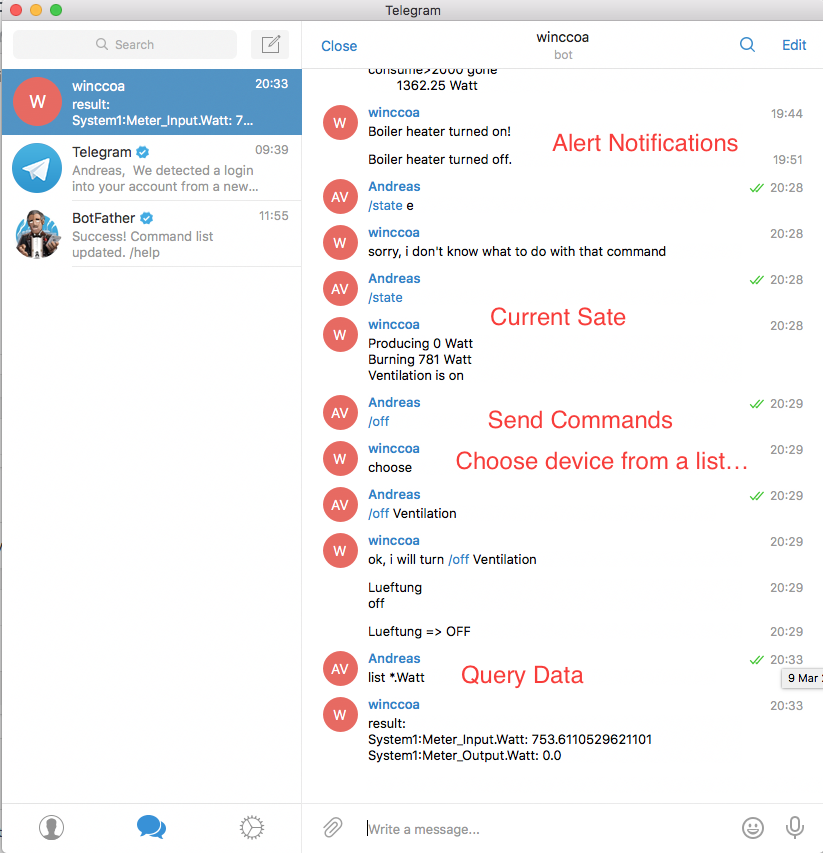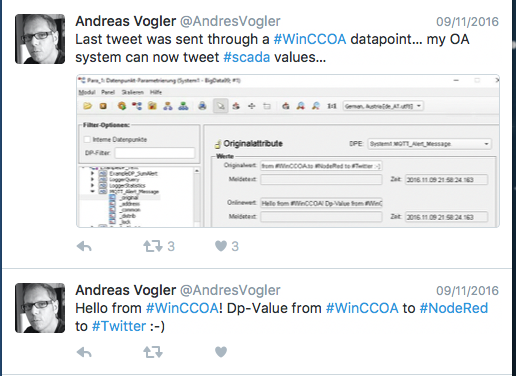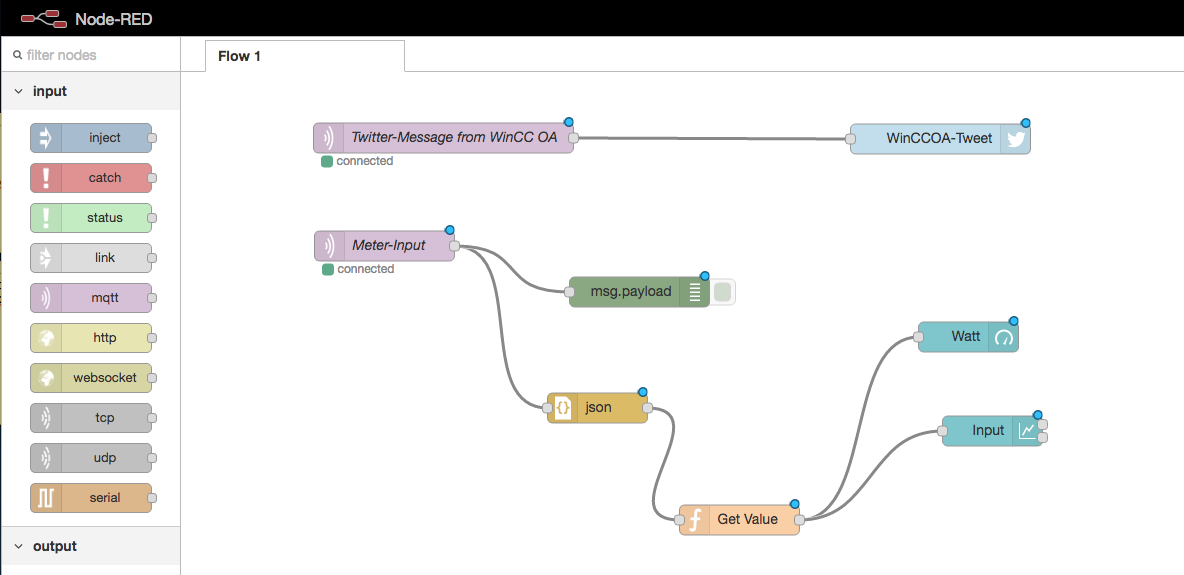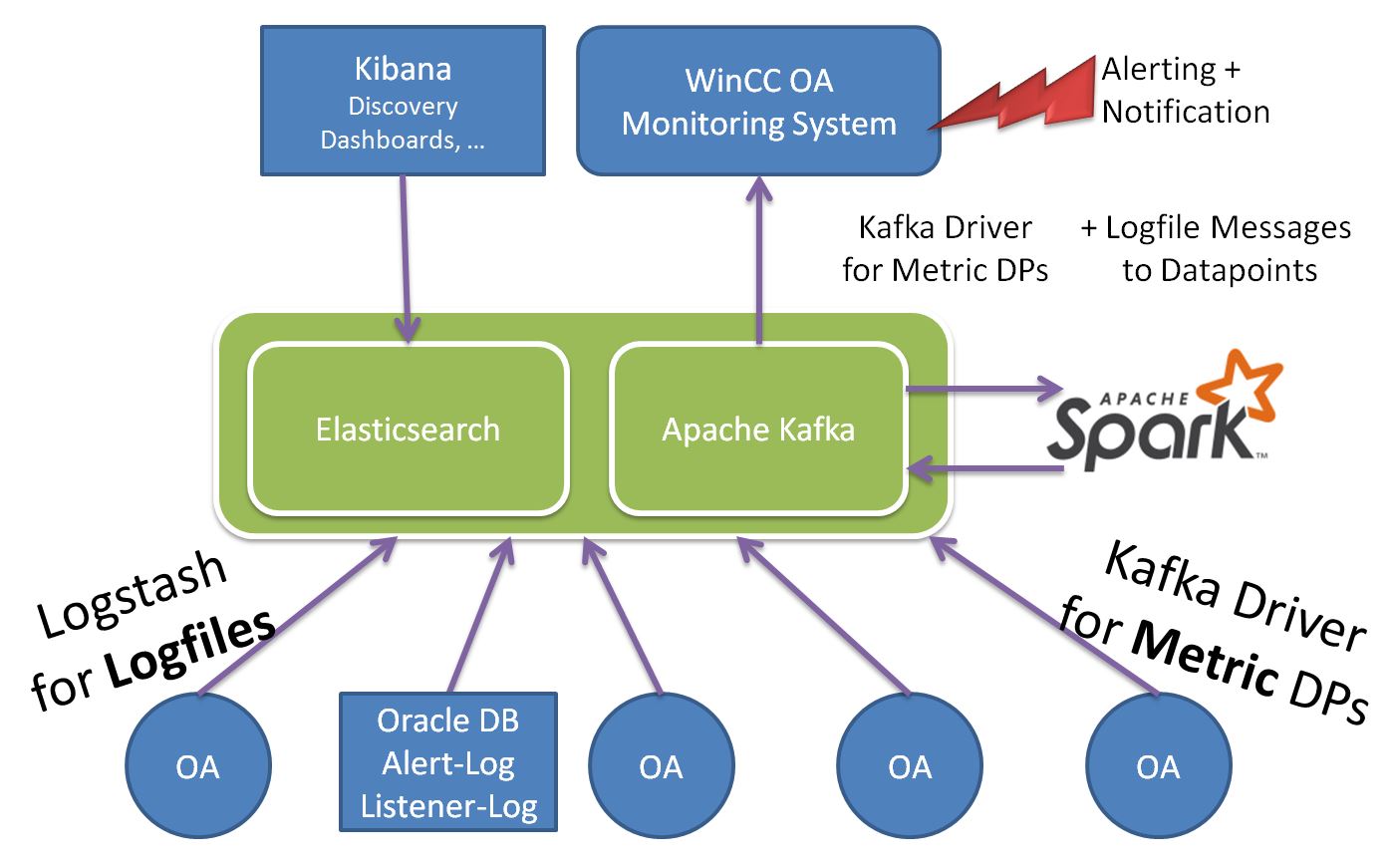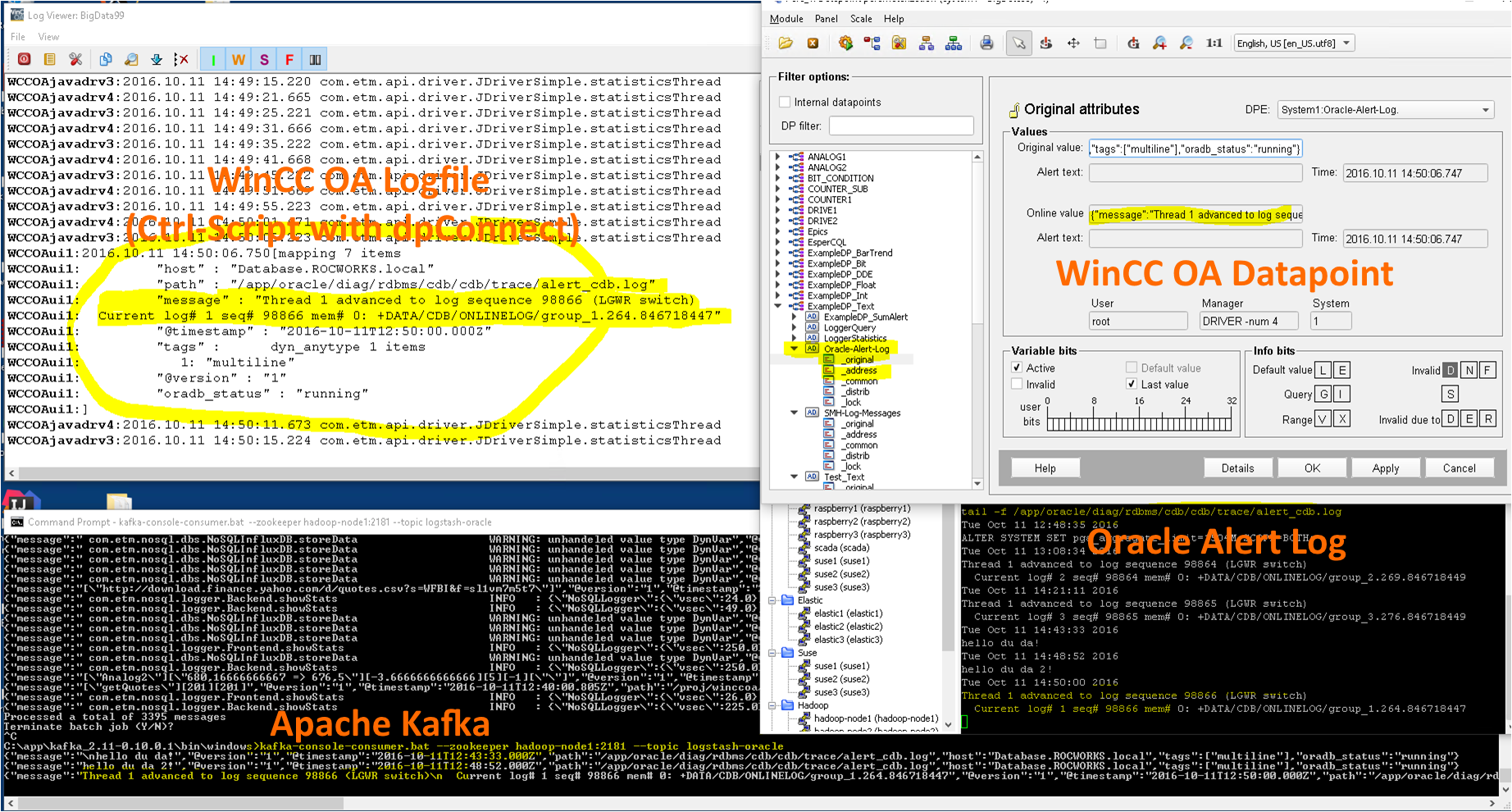This repository on Github contains Dockerfiles and samples to build Docker images for WinCC OA products.
Build Docker Image
Download and unzip the CentOS WinCC OA rpm’s to the centos/software directory.
Only put those WinCC OA rpm’s into the directory which you want to have installed in your image. For a minimum image you only need the base packag of WinCC OA.
WinCC_OA_3.16-base-rhel-0-17.x86_64.rpm
Build your WinCC OA Docker image with:
docker build -t winccoa:3.16 .
WinCC OA Project in a Container
The project should be mounted on /proj/start as a volume to your docker container.
And you may also mount a shield file to your docker container.
Example how to startup a WinCC OA project in a container:
docker run -d
--name winccoa
--hostname winccoa-server
-v ~/shield.txt:/opt/WinCC_OA/3.16/shield.txt
-v /proj/DemoApplication_3.16:/proj/start
-p 5678:5678
winccoa:3.16 WinCC OA Gedi in a Container
To start a WinCC OA client application like a Gedi or a User-Interface you have to adapt your config file so that the proxy settings point to the WinCC OA server container. You can just create a copy of your config file (e.g. config.ui) and adapt the settings.
[general]
data = "winccoa-server"
event = "winccoa-server"
mxProxy = "winccoa-server <your-docker-host-name>:5678 cert" Then you can startup a Gedi/Ui with:
docker run --rm
-e DISPLAY=$DISPLAY
-v /tmp/.X11-unix:/tmp/.X11-unix
-v /proj/DemoApplication_3.16:/proj/default
-v /proj/DemoApplication_3.16/config/config.ui:/proj/default/config/config
winccoa:3.16
WCCOAui -autoreg -m gedi -proj default Sure you can also use a copy of your project directory (or a git checkout if you use git) and adapt the config file.
Start Project Administration as Container
With the Project Administration you can create a new project in the /proj directory.
docker run -ti --rm
-e DISPLAY=$DISPLAY
-v /tmp/.X11-unix:/tmp/.X11-unix
-v /proj:/proj
winccoa:3.16
WCCOAui -projAdminDistributed Managers and Kubernetes
For sure what we have done with the Gedi can also be done with Control-Managers and Drivers. And in theory that can also be done with Kubernetes and so you can run your SCADA project in a Kubernetes Cluster.


